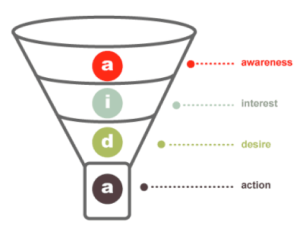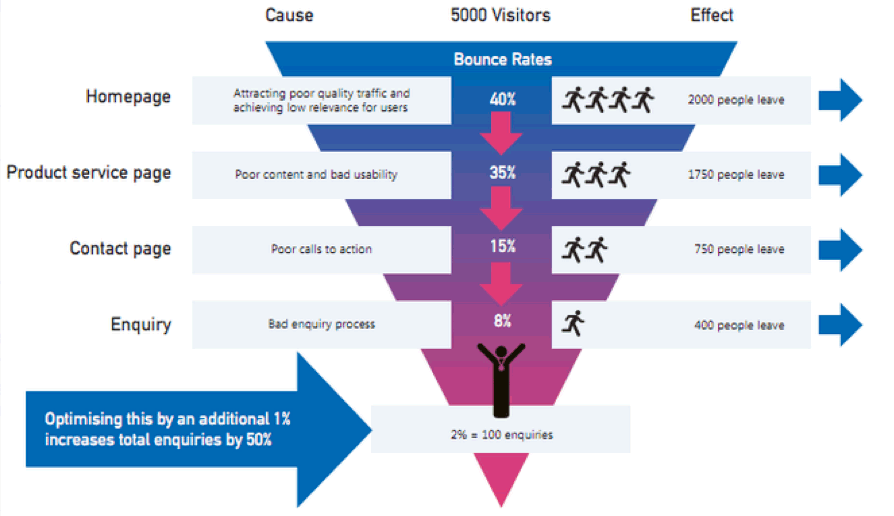Even if you’re relatively new to online marketing, chances are you’ve at least heard of a website conversion funnel. The term is fairly intuitive. And there’s no shortage of articles, posts and forum threads on the topic. But why?
A large part of your success in online business depends on how well your conversion funnel is optimized.
Maybe you’re thinking you don’t exactly have a funnel. You’ve really never thought much about it. Or you’ve not done anything on your business website with the concept in mind.
Well, regardless of all that; you do have one whether you tried to create one or not. If you’re selling anything online, you have one. Not selling anything? Just gathering leads or trying to build your mailing list?
You still have a funnel. Anything you do that attempts to get your visitors to take some kind of action automatically creates a conversion funnel.
The most important thing to do now, if you haven’t done it or even thought about it yet, is optimize your conversion funnel.
Using AIDA to Analyze and Optimize Your Conversion Funnel
Before you can effectively optimize your funnel, you need to understand the process that’s going on so you can analyze it and then test it.
If you’re familiar with copywriting or have read some of the older copywriting books, then perhaps you’ve heard of AIDA – Aware, Interest, Desire and Action. And it applies perfectly to conversion funnels.

These are the elements of a basic conversion funnel.
1. Your visitors (and potential customers) obviously need to be aware that your website exists.
2. Your task is to create and build interest in what you’re offering. As you can imagine, there are lots of ways to create interest. And when you think about it, your visitor arrives at your website already interested; otherwise, he wouldn’t have bothered to pay you a visit.
NOTE: Your funnel also serves as a filter because not every person who is aware of your site, or your offer, will have an interest.
3. Cultivating desire – this is taking interest to a higher level. You can use copywriting principles to help you create desire. This isn’t about using tricky words or tactics, either. This is about building a bridge between what you’re offering to the visitor.
And the best way to do this is with facts, features and benefits. You can help your self by knowing your audience, or customer profile, so you know what matters most to them.
4. You have to ask for what you want. And you want visitors to take action regardless of what you’re promoting.
So, now that you know these elements, can you identify them in your website? If not, then it’s time to analyze what needs to be done so your funnel is stronger.
Capturing and Re-engaging with New Funnels
If your funnel is adequately optimized, you can reasonably expect a conversion rate of roughly 1 percent to ~5 percent. Those are industry standard figures and you can easily find variations.
So that means you’ll get that percentage of people to take the action you desire.
If you’re serious about optimizing your funnel, then you’ll want to capture the attention of the 99-95 percent who did not take action. There are ways of doing this such as using exit pop-ups or triggered scripts (pop-ups). Then what?

You should test different scripts (and offers) such as opting-in to your mailing list. If they leave from a sales letter, you can try offering a different price point.
Think in terms of diverting prospects into an entirely new and different funnel. This is where you need to analyze the context of each point where you can lose visitors. And then create a new funnel for them with an alternative experience.
There’s plenty of room for testing. It’s a process that never ends and you’ll be testing new things all the time. And this is a process that tends to separate the men and women from the boys and girls in online marketing.
Once you’ve mastered optimizing conversion funnels, then consider product creation and launch marketing. That’s where you create solid six figure online businesses.
Leave a Reply